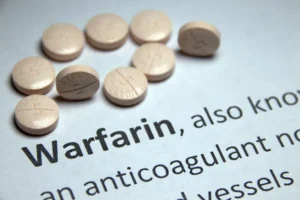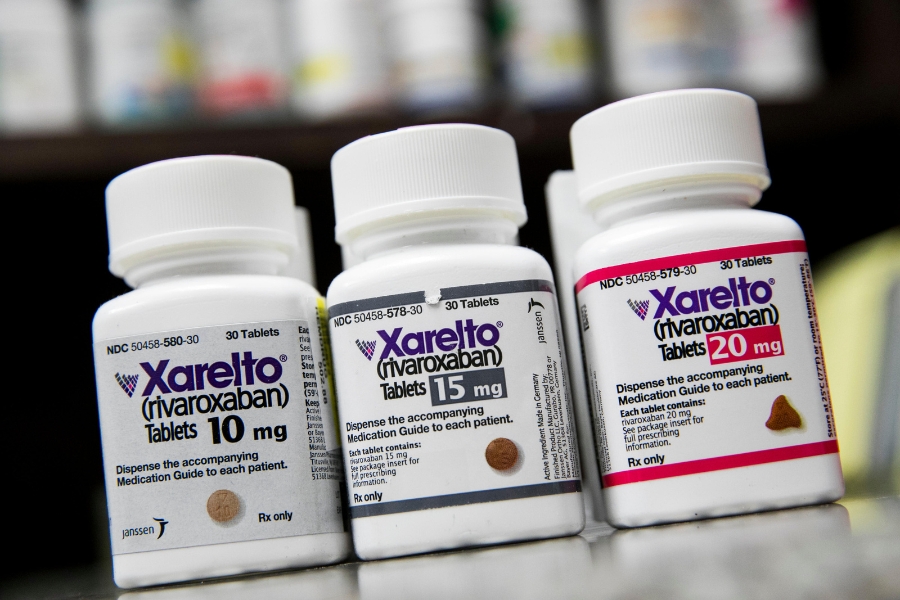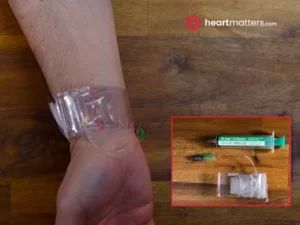Anticoagulants are a class of medications that help to prevent blood clots from forming in the body. They are used to treat a variety of conditions, including atrial fibrillation (AF), deep vein thrombosis (DVT), and pulmonary embolism (PE). In the past, the most commonly used anticoagulant was warfarin. However, newer oral anticoagulants (NOACs) or direct oral anticoagulants (DOACs) have become available recently, including Rivaroxaban (Xarelto), Apixaban (Eliquis), and Dabigatran (Pradaxa). These drugs have several advantages over warfarin, including a simpler dosing regimen and less need for blood test monitoring. In this article, we will discuss NOACs/DOACs in anticoagulation therapy. For a detailed read on blood clots, see our article here edited by A/Prof. Ali Bazargan, Hematology Specialist.
Overview
NOACs/DOACs are a relatively new class of oral anticoagulants that directly inhibit specific clotting factors in the blood. Unlike warfarin, which works by inhibiting the production of clotting factors in the liver, NOACs/DOACs target specific factors in the blood, such as thrombin or factor Xa, to prevent clot formation.
There are currently three NOACs/DOACs available on the market: Xarelto (rivaroxaban), Pradaxa (dabigatran), and Eliquis (apixaban). Each drug has a unique mechanism of action and dosing regimen.
Mechanism of Action
Rivaroxaban (Xarelto) works by inhibiting factor Xa, a key factor in the blood clotting cascade. By inhibiting factor Xa, Xarelto helps prevent the formation of blood clots. Dabigatran (Pradaxa), on the other hand, works by directly inhibiting thrombin, another key factor in the blood clotting cascade. By inhibiting thrombin, Pradaxa helps prevent the formation of blood clots. Apixaban (Eliquis) works by inhibiting factor Xa, similar to Xarelto.

Comparing NOACs/DOACs to Warfarin
NOACs/DOACs have several advantages over warfarin. One main advantage is that they have a simpler dosing regimen. With warfarin, patients need regular blood tests to monitor their INR (International Normalized Ratio), which measures how long it takes to clot. The dosing of warfarin is adjusted based on the patient’s INR level. With NOACs/DOACs, there is no need for regular blood tests, as the dosing is fixed.
Another advantage of NOACs/DOACs is that they have a lower risk of bleeding than warfarin. Bleeding is a potential side effect of all anticoagulants, but NOACs/DOACs have been shown to have a lower risk of bleeding than warfarin. This is because NOACs/DOACs target specific clotting factors, whereas warfarin inhibits the production of all clotting factors in the liver.
General Indications
NOACs/DOACs are indicated for treating and preventing various conditions, including atrial fibrillation (AF), DVT, and PE. AF is a condition in which the heart beats irregularly, which can lead to blood clots forming in the heart. These clots can then travel to the brain, causing a stroke. DVT is a condition in which blood clots form in the deep veins of the legs or arms. PE is when a blood clot travels to the lungs, causing a blockage.
Dosing Regimen
The dosing regimen for NOACs/DOACs differs slightly between each drug. Xarelto is typically taken once daily with a meal, while Pradaxa and Eliquis are taken twice daily. It is important to follow your healthcare provider’s dosing instructions and never adjust your dosage without their approval.
Your doctor will assess several factors, including your age and kidney function as indicated by blood tests, to determine your appropriate dosage. In the treatment of blood clots and atrial fibrillation, Xarelto is commonly prescribed in daily doses of either 15mg or 20mg, Apixaban in twice-daily doses of either 2.5mg or 5mg, and Pradaxa in twice-daily doses of either 110mg or 150mg. It’s important to consult your healthcare provider to ensure you are prescribed the optimal dose tailored to your needs.
Advantages
As mentioned earlier, NOACs/DOACs have several advantages over warfarin. One of the main advantages is that they have a lower risk of bleeding. This is because they target specific clotting factors in the blood rather than inhibiting the production of all clotting factors in the liver, like warfarin. NOACs/DOACs also have a simpler dosing regimen, making patients less likely to miss or take incorrect doses. Finally, there is no need for regular blood tests to monitor INR levels, which can be inconvenient and time-consuming for patients.
What to Look Out For
While NOACs/DOACs are generally safe and well-tolerated, there are some potential side effects that patients should be aware of. These include bleeding, gastrointestinal upset, and allergic reactions. If you experience any unusual symptoms while taking NOACs/DOACs, such as sudden and severe bleeding or difficulty breathing, seek medical attention immediately.
How to Reverse DOAC actions
Due to their efficacy and safety profile, direct oral anticoagulants (DOACs) have revolutionized the management of thromboembolic disorders. However, situations may arise where reversal of their anticoagulant effects becomes necessary, such as in cases of life-threatening bleeding or emergent surgery.
Unlike traditional anticoagulants like warfarin, which have specific antidotes, DOACs present a challenge in terms of reversal strategies due to the absence of readily available antidotes for all agents. Nevertheless, specific reversal agents have been developed for some DOACs. For instance, idarucizumab is a monoclonal antibody fragment that rapidly reverses the anticoagulant effects of dabigatran, a direct thrombin inhibitor. Andexanet alfa is another reversal agent approved for rivaroxaban and apixaban, which acts as a decoy to bind and neutralize factor Xa inhibitors.
While these reversal agents effectively counteract the anticoagulant effects of DOACs in urgent situations, their usage should be judiciously considered, balancing the risk of bleeding against the need for anticoagulation. Additionally, supportive measures such as hemodynamic stabilization and transfusion of blood products remain crucial adjuncts in managing bleeding complications associated with DOAC use.
As the field of anticoagulation continues to evolve, ongoing research endeavors aim to refine further and expand the armamentarium for DOAC reversal, enhancing the safety and efficacy of these medications in clinical practice.
Conclusion
NOACs/DOACs are a newer class of oral anticoagulants that offer several advantages over warfarin. They work by directly inhibiting specific clotting factors in the blood and have a simpler dosing regimen. They are indicated for treating and preventing various conditions, including AF, DVT, and PE. While they are generally safe and well-tolerated, patients should be aware of potential side effects and seek medical attention if they experience any unusual symptoms. If you are considering anticoagulation therapy, talk to your healthcare provider about whether NOACs/DOACs are right for you.








